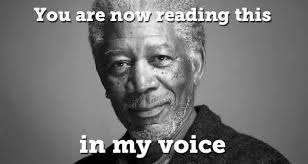When To Use Documentary Narration
I hope your week is going well! We recently sent a terrific documentary we’ve been editing to HBO for review. Directed by Lenny Feinberg, Father’s Kingdom is an historical documentary that includes an interesting contemporary verite arc. Since I’ve been co-writing the narration, I decided to write a 2-part newsletter to help other filmmakers who may be considering using narration.
Does your documentary need narration? It’s an underrated storytelling device. In Part 1, this newsletter looks at why you might want to use narration. In Part 2 next week, I’ll share specific tips for writing for screen, which is different than writing for print.
Here are four reasons why your documentary might benefit from narration.
First, even if it’s text on screen, most documentaries require some vehicle for delivering exposition, or factual information. Both textual narration and voiceover narration can give the viewer information that your talking heads don’t provide. In our HBO film, even with terrific interviewees (and supplement pick-up interviews), there were gaps in the storytelling that carefully written narration is now conveying with brevity and flair.
If you lean toward art-house style filmmaking, you may balk at the idea of using “voice of god” narration, which has fallen out of fashion. Still, many award-winning documentaries succeed in toning down the “god” part and cultivating the “voice” part. So the second reason to use narration is to cultivate a particular “personality” for your film.
For example, the blockbuster documentary March of the Penguins (2005) sorely needed a human voice to narrate the penguins’ quest to find the perfect mate and start a family. The warm, reassuring narration of Morgan Freeman provided the perfectly cultivated “voice” to appeal to curious adults and little kids.
A third reason to use narration: it’s a powerful tool to make smooth transitions. As a story consultant, I frequently see rough cuts fraught with awkward transitions, skidding from one idea to a different idea, or from one plot point to an unrelated plot point. Transition narration can easily solve this problem.
Here’s an example from the Oscar short-listed documentary The Internet’s Own Boy: The Story of Aaron Swartz (2014), in which writer/director Brian Knappenberger transitions from the protagonist’s PACER effort to the protagonist’s experience in Congress: “Bothered by wealth disparity, Swartz moves beyond technology and into a broader range of political causes.”
Note also that this simple transition narration uses the present tense “moves”, rather than the past tense “moved”. Present tense (which may not be appropriate for an historical documentary) lends an added sense of urgency.
Finally, narration can be used to help structure your documentary with important framing devices. For character-driven films, these including an Act One Protagonist’s Statement of Desire and an Act Three Protagonist’s Statement of Transformation.
For essay-style documentaries, narration can frame the opening thesis statement or the film’s central question, as well as underscore the film’s takeaway message and, if needed, a call to action.
The talented editors in our Finish Your Film Program are skilled at writing narration. Please email me for a free consultation to talk about how we can help you structure your film and decide if narration is right for your project.
Here’s what director Lenny Feinberg, mentioned earlier, had to say about working with New Doc Editing:
“Karen has been an enormous help to me on the film I’m making. She immediately understood and discussed the weaknesses and strengths of the project. More than that she is a filmmaker herself and well knows the emotional process we go through. It’s money well spent. My only regret is that I didn’t know her when I did my earlier projects. They would’ve been better films if I had.”
